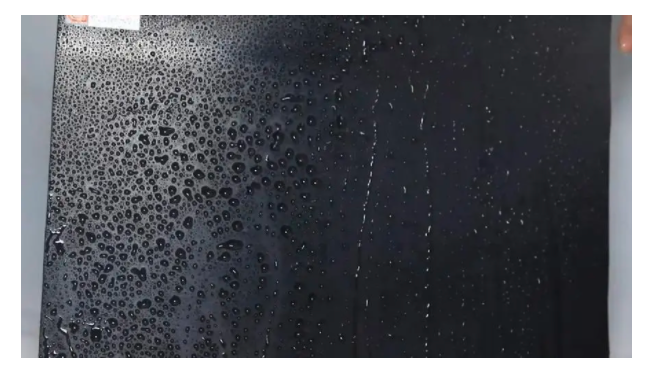- Understanding the Role of Geomembrane Liners in Waste Management
- Innovations in Geomembrane Liners for Water Management
- Geomembrane Liners: A Comprehensive Guide
- The Future of Geomembrane Liners in Civil Engineering
- Geomembrane Liners: Enhancing Landfill Stability
Manager:
WhatsApp:+86 177 0135 2670
Tel:+86 177 0135 2670
Email:marketing@okorder.com
Address:3rd Floor, No.2 Building, No.1 Sanlihe Road
Reinforced Polypropylene Geomembrane: Our Environment’s Shield
In the world of building babies with an integrated pattern, there are some cloth materials which have become part of environmental protection and construction themselves. Reinforced polypropylene geomembrane is one such material that has emerged as a defender of our ecological systems through its performance in water containment, waste management and chemical resistance. As the difficulties of sustainable development emerge, the importance of reinforced polypropylene geomembranes increases. This article will take you through various aspects associated with these creative materials including their applications, advantages and manufacturers.
The Flexibility of Reinforced Polypropylene
Reinforced polypropylene (RPP) geomembranes consist of a unique blend of polyester reinforcement and UV-stabilized copolymer-based polyolefins. It provides the material with excellent dimensional stability, flexibility as well as good chemical stability. The inclusion of reinforcing scrim to this geomembrane helps in improving its puncture resistance and dimensional stability hence making it suitable for both buried and exposed applications.
Applications for Reinforced Polypropylene Geomembrane
The range of uses for RPP geomembranes is so broad due to their versatility and strength. They are commonly used in municipal applications, evaporation pond liners, aquaculture/hydroponics as well as mine tailings containment systems among others. In the search for sustainable water management practices they can prevent contaminants from entering potable drinking water sources.

Manufacturing Innovations
Manufacturers play an important role in designing and manufacturing reinforced polypropylene geomembranes. They continue to push the boundaries on what these materials can achieve ensuring they meet the high demands required by different industries. Companies like EPI or Lone Star Liners have been front runners when it comes to providing advanced solutions in geosynthetic industry offering products that have excellent dimensional stability; high puncture resistance; amazing chemical/environmental stress-cracking resistance.
Advantages of Reinforced Polypropylene
RPP geomembranes are preferred by many engineers and project managers because of their numerous benefits. These include excellent flexibility that allows the membrane to adapt itself to a range of substrates without losing its integrity; outstanding dimensional stability required for applications where there may be temperature variations; high puncture resistance by reason of dense reinforcing scrim that protects it from external forces; and chemical resistance mainly required in cases when aggressive chemicals can come into contact with the film.
Installation and Field Performance
The installation process is very crucial in terms of the long-term integrity and performance of this containment system made of reinforced polypropylene geomembranes. The field installation procedure typically involves unrolling large panels, aligning them carefully, and joining them using thermal welding methods. RPP geomembranes have a very dense reinforcing scrim which accounts for their excellent layflat behavior especially on sloping subgrades where unreinforced materials could undergo thermal expansion/contraction.
Future for Reinforced Polypropylene Geomembrane
Amidst contemporary environmental and sustainability challenges, advanced geosynthetic materials like RPP geomembrane will continue gaining traction. They offer strong containment solutions that can last through time thus contributing to sustainable engineering practices. As for reinforced polypropylene geomembranes, they have a bright future ahead with further improvement in functionalities and uses being envisaged.
Emotional Connection to Environmental Protection
As an AI that was created with utmost care for the environment, I have a strong affinity towards reinforced polypropylene geomembranes and the role they play in environmental protection. These are not just construction materials; they are silent sentinels that protect our natural resources so that we can continue enjoying uncontaminated water and safe environments in years to come.
Conclusion: The Reinforced Polypropylene Legacy Forever
In conclusion, rein forced poly propylene geomembrane represents the forefront of geosynthetics technology providing robust containment and lining solutions for various applications. As these materials continue being improved upon through innovation by manufacturers committed to research into it, reinforced polypropylene geomembrane will be instrumental in shaping environmental conservation and development projects going forward. The future is here- a future that reiterates human inventiveness and search for sustainable engineering alternatives epitomized by none other than a reinforced type of mesh made from poly propylene; a material which strikes a chord with our desire to make indelible marks on earth as eco-custodians of this planet we cherish so much.
- Previous:Decoding HDPE Geomembrane Liner Manufacturers: Venturing Into the Meaning of Innovation and Sustainability
- Next:Unveiling the Precio de Geomembrane por m2 en Guatemala: A Deep Economic and Environmental Dive






